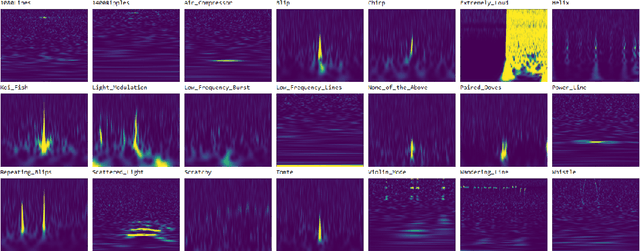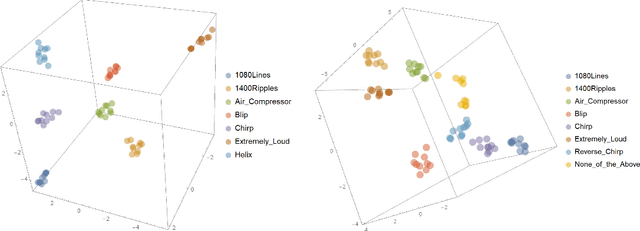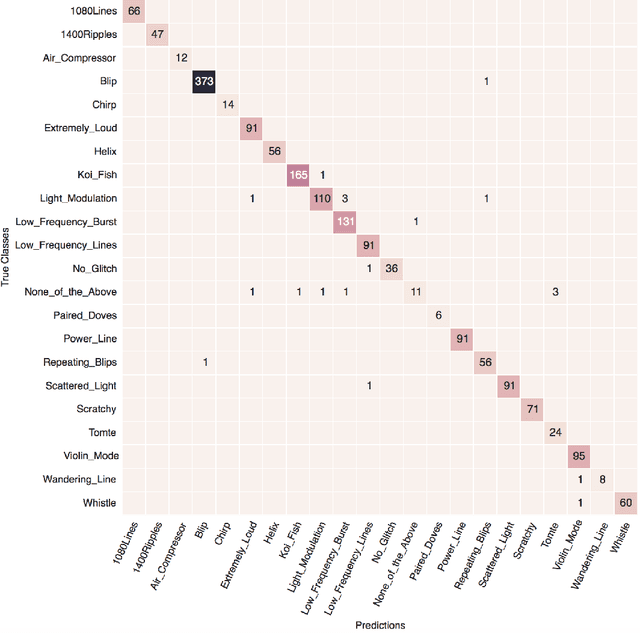Deep Transfer Learning: A new deep learning glitch classification method for advanced LIGO
Paper and Code
Jun 22, 2017



The exquisite sensitivity of the advanced LIGO detectors has enabled the detection of multiple gravitational wave signals. The sophisticated design of these detectors mitigates the effect of most types of noise. However, advanced LIGO data streams are contaminated by numerous artifacts known as glitches: non-Gaussian noise transients with complex morphologies. Given their high rate of occurrence, glitches can lead to false coincident detections, obscure and even mimic gravitational wave signals. Therefore, successfully characterizing and removing glitches from advanced LIGO data is of utmost importance. Here, we present the first application of Deep Transfer Learning for glitch classification, showing that knowledge from deep learning algorithms trained for real-world object recognition can be transferred for classifying glitches in time-series based on their spectrogram images. Using the Gravity Spy dataset, containing hand-labeled, multi-duration spectrograms obtained from real LIGO data, we demonstrate that this method enables optimal use of very deep convolutional neural networks for classification given small training datasets, significantly reduces the time for training the networks, and achieves state-of-the-art accuracy above 98.8%, with perfect precision-recall on 8 out of 22 classes. Furthermore, new types of glitches can be classified accurately given few labeled examples with this technique. Once trained via transfer learning, we show that the convolutional neural networks can be truncated and used as excellent feature extractors for unsupervised clustering methods to identify new classes based on their morphology, without any labeled examples. Therefore, this provides a new framework for dynamic glitch classification for gravitational wave detectors, which are expected to encounter new types of noise as they undergo gradual improvements to attain design sensitivity.
 Add to Chrome
Add to Chrome Add to Firefox
Add to Firefox Add to Edge
Add to Edge